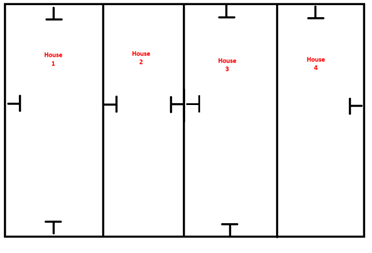
With Storm Babet hitting the country with high winds and rain, there may be some people left wondering who is responsible for the boundaries at their property, especially when damage to fence structures take place
There is a general misconception among property owners that they own, and therefore are responsible for the boundaries on the left-hand side of the property. There are also misconceptions that how a boundary structure has been constructed indicates ownership of the same e.g., that the post/rails side of a fence belongs to the owner.
There are, however, no general rules which are to be applied when considering which boundaries belong to which property. A property owner could therefore find that they are responsible for only some of the boundaries, whereas others could find that they are responsible for all the boundaries to their property.
Referring to your title deeds is a good starting point for confirmation on the position. Such documents as Transfers and Conveyances may contain information on the boundaries which would be denoted by an inward facing “T” mark. You should note that title deeds may refer only to a requirement of a property owner to repair/maintain a certain fence/wall, but the Land Registry has indicated that such a requirement on its own, i.e. no “T” marks noted in the title deed, is not sufficient to establish ownership of a boundary.
You may find that your title deeds have no “T” marks or other references to the boundaries. In such cases it is best practice to view the boundary as a party boundary meaning that the property owner and their neighbour are to repair and maintain the fence structure jointly.
REAR OF PROPERTY

FRONT OF PROPERTY
In the example above you will see that: –
- House 1 – is responsible for the front, left and rear boundaries of the property.
- House 2 – is responsible for the left boundary with the right boundary being a party boundary and shared with House 3.
- House 3 – is responsible for the front and rear boundaries with the left boundary being a party boundary and shared with House 2.
- The boundary between House 3 and 4 is likely to be a party boundary given the lack of “T” Marks.
- House 4 is responsible for the rear and right boundaries, the left boundary likely being a party boundary with House 3.
It is also worth noting that the legal boundary between two properties is in fact an invisible line. If a physical boundary is erected inside of the invisible boundary line, that property owner becomes responsible for the physical boundary feature.




